Search Results
Jeff
A little over two years ago, I was diagnosed as having chronic lymphocytic leukemia (CLL). I was shocked and devastated by the news and immediately began seeing an oncologist. My team from the cancer center has been uplifting, positive, and supportive from the very beginning! They have been successfully treating my cancer and have taught me not to fear my disease.

Tracey
I was diagnosed with chronic lymphocytic leukemia (CLL) in 2021 after a routine physical after my 50th birthday. It was a complete shock, and I was scared and unsure of what my future would look like. With the help of my doctors and The Leukemia & Lymphoma Society (LLS), I feel prepared to make informed decisions about my future. I participate in medical research studies and intend to join a clinical trial (that a clinical nurse at LLS told me about) when I need treatment.
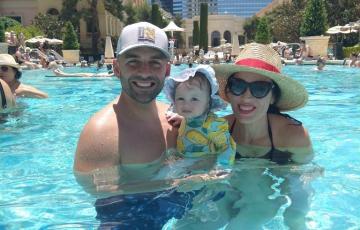
Michele
I was recently diagnosed with chronic lymphocytic leukemia (CLL). My mom passed away from pulmonary fibrosis right before Thanksgiving 2022. She never smoked and had none of the risk factors that led to that type of disease. So, I thought I would get a physical to make sure I was healthy. I have a 2½-year-old daughter, and I am an older mom, so I figured I should make sure my lungs were healthy. I didn't even have a primary care physician, so I asked my good friends for a recommendation.
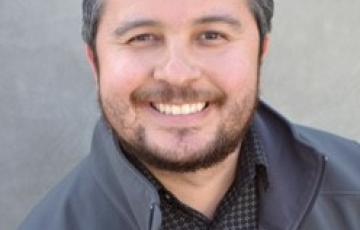
Jaime
My name is Jaime Fernandez and I am a Clinical Social Worker with UCI Health. I have the pleasure and honor of working with individuals diagnosed with blood cancers. Supporting my patients and their loved ones as they navigate these diagnoses has become my driving force. I have been a social worker for nine years now and it wasn't until I moved to UCI's Chao Family Comprehensive Cancer Center, and began working with this population, that I gained a new appreciation for what I do.

Annette
I had been feeling unwell for quite a while. I would come home from work and go to bed right after dinner. I would sleep for hours and still be fatigued. When we had afternoon meetings, I would fall asleep. My husband and I kept thinking it was my very stressful job. I was on airplanes three times a week and would be traveling all over the country. I wasn’t eating or sleeping well. I finally decided to take early retirement. I still did not feel well even after being retired. I finally got to the point where I was so sick, I told my husband to take me to the emergency room.
Reid
I was diagnosed with chronic lymphocytic leukemia (CLL) in May 2022. It was a rough time with 10 blood transfusions, weeks in the hospital, and learning a new “normal”.
But that is not my story.
Side Effects
Therapy for CLL sometimes produces side effects. Side effects from kinase inhibitor drugs and monoclonal antibody therapy are generally milder than side effects from chemotherapy.
For most patients, treatment side effects are temporary and go away once therapy ends. For other patients, side effects can be more severe, sometimes requiring hospitalization. Some patients never have side effects.
Radiation Therapy
Radiation therapy uses X-rays or other high-energy rays to kill cancer cells. Radiation therapy is sometimes used to treat a person with CLL who has an enlarged (swollen) lymph node, spleen, or other organ that is blocking the function of a neighboring body part, such as the kidney or the throat.
Lisa
I noticed some lymph nodes popped up on my neck so I went to the Dr. I didn't feel bad at all. My Dr ordered blood work and my white blood count was high. I was sent to The Cancer Center of Acadiana and more blood work, scans, ultrasound and bone biopsy was done. After all the results came in my white blood count was 99,000 and I had 75% leukemia cells in my bone marrow. I was diagnosed with CLL. 4 days later I was in the Infusion room at The Cancer Center of Acadiana. After 5 months of chemo going 2 days every month I am leukemia free.
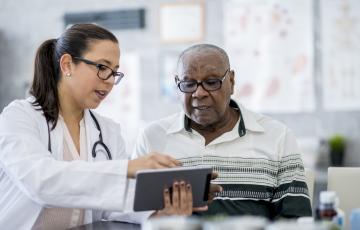
What Is Blood Cancer?
Reviewed by Gwen Nichols, MD, EVP and Chief Medical Officer at The Leukemia & Lymphoma Society

Mike
I was diagnosed with chronic lymphocytic leukemia (CLL) in December 2004 at stage 0 which was revealed through a routine yearly physical.
Splenectomy
The spleen is an organ on the left side of the body, near the stomach. CLL cells can collect in the spleen, causing it to become enlarged. Sometimes, the spleen becomes so large that it presses on nearby organs, causing pain. Also, an enlarged spleen may lower a person’s blood cell counts to dangerous levels. An operation to remove the spleen is called a splenectomy. Splenectomy is helpful for select patients. The operation may reduce pain and help improve blood counts.
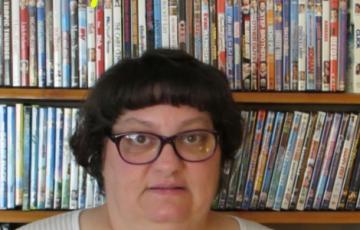
Angela
I was diagnosed with chronic lymphocytic leukemia (CLL) in April 2009. I was so devastated. The first thing that got me through was a friend who had just won his battle with leukemia. I hadn't seen him in about a year, but he popped up all of a sudden that day and gave me hope.
A couple of months later, the oncologist and I agreed I would go into a wait and see period. He said it would likely be 6-10 years before I needed any treatment. I made it almost 6 years. I began treatment in March 2015.
Pan-heme CAR: Anti-CD38 CAR T cells for myeloid, lymphoid and plasma cell malignancies
Our SCOR team has a razor-sharp focus on an exciting new treatment modality for blood cancers: chimeric antigen receptor (CAR) T cells. T cells can be trained to target cancer cells by genetic modification. In fact, previous support from the Leukemia & Lymphoma Society allowed us to successfully develop CAR T cells targeted to CD19, a pan-B cell marker.Daniel
I was diagnosed with chronic lymphocytic leukemia (CLL) in March 2010 at the age of 48. The cancer advanced rapidly and I was treated with a fludarabine/cyclophosphamide/rituximab (FCR) regimen at MD Anderson in Houston and locally in my hometown of Raleigh, NC between January and July of 2011. The treatment achieved a partial remission. However, in September of the same year I was diagnosed with a large diffuse b-cell lymphoma tumor in my lung.
Len
My son was rubbing my shoulders and noticed a lump on the side of my neck which freaked him out. He then told my wife about it and they demanded that I go have it checked. In November 2013, I was diagnosed with chronic lymphocytic leukemia (CLL).
I had my second round of treatment this past spring. The first one was rituxan alone and this last time was rituxan along with bendamustine for six months.

Alice
I was diagnosed with chronic lymphocytic leukemia (CLL). As soon as you learn that you have a form of cancer in your body, read a lot about it. Learn as much as you can about your cancer and how to talk to your doctor. It's up to you; it’s a mind situation. Don’t say, “Woe is me.” Say, “What should I do to take care of myself and enjoy life?” You are in charge, no one else can do it for you.
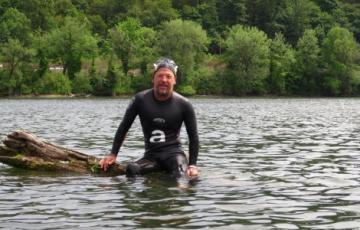
Dean
I was losing the battle with chronic lymphocytic leukemia (CLL) and lymphoma in August of 2013 when I ran across this quote from Albert Einstein, "There are only two ways to live your life. One is as though nothing is a miracle. The other is as though everything is a miracle." I decided to adopt this as my standard to live by. It gave me new insight and a passion for living that fueled my will to live.
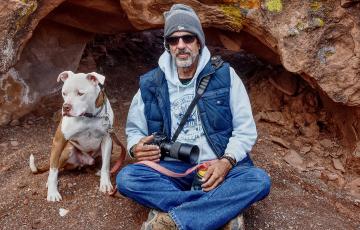
Joseph
I came down with chronic lymphocytic leukemia (CLL) in 2006 which transformed into an aggressive form of non-Hodgkin B-cell lymphoma (NHL) in 2013. In 2015, I received an umbilical cord transplant at Penn Medicine Hospital in Philadelphia which was successful. This month, I celebrate nine years post-transplant.

Howie
In January 2014 I got pneumonia for the third in under two years. The hematologists examined my blood and suspected CLL, since my white-blood count was so low. Then a bone-marrow biopsy confirmed this. This certainly explained my inability to fight infections. I skipped all the steps in the grieving process and went straight to acceptance: It is what it is.
Treatment for Indolent NHL Subtypes
Indolent non-Hodgkin lymphoma (NHL) subtypes progress slowly. They make up about 40 percent of all NHL cases in the United States. Indolent subtypes include:
Michelle
I was originally diagnosed with Philadelphia chromosome + acute lymphoblastic leukemia (Ph+ ALL) in June 2017. My first month of treatment was a breeze, and I tolerated IV chemo well. Unfortunately, the rest of my two years of treatment wasn’t as smooth. I ended up in the pediatric intensive care unit for over a month. I was experiencing methotrexate toxicity and fighting for my life. Once I started recovering, I relearned how to walk, got my strength back, and continued fighting my fight. I was in remission by August 2017 and then finished treatment in June 2019!!
Charlene
Cancer. That is a word that is scary. So many of us have friends, family and co-workers that are impacted by some type of cancer, but you never think it will be you. The word conjures up fear. Fear of treatment, fear of death and fear of what will be expected of you to deal with and hopefully survive.
Reduced-Intensity Allogeneic Stem Cell Transplantation
Reduced-intensity allogeneic stem cell transplantation (sometimes called mini-transplant or nonmyeloablative transplant), like a standard allogeneic stem cell transplantation, uses stem cells from a donor, but the conditioning treatment contains lower, less toxic doses of chemotherapy and radiation. This type of SCT may be an option for certain patients who are older or who are otherwise not healthy enough or strong enough to undergo standard allogeneic SCT.